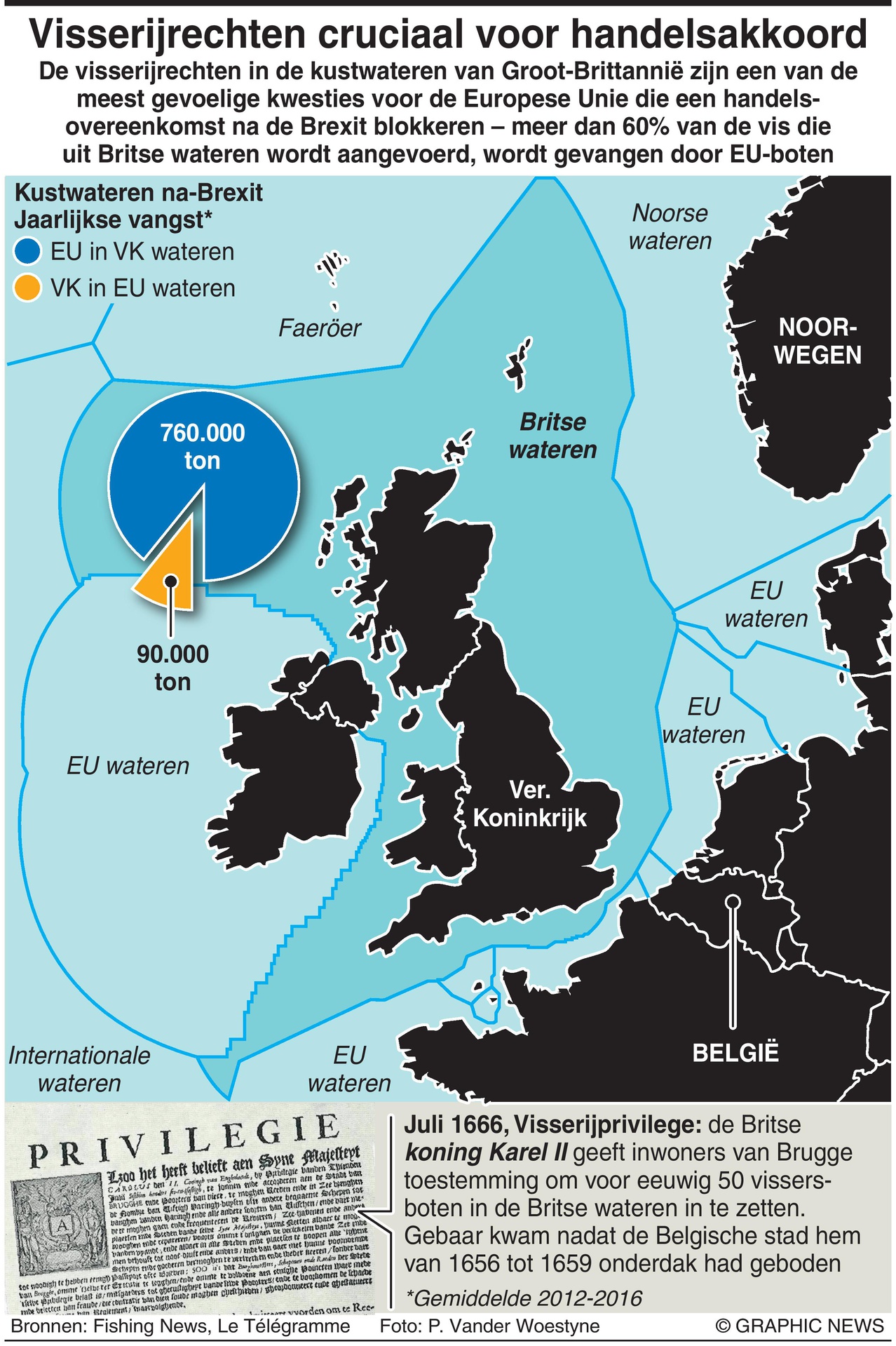Toegang Europa tot Britse visserijwateren
BY DUNCAN MIL
European Union fishing rights in Britain’s coastal waters are one of the most sensitive issues blocking a post-Brexit trade deal. More than 60% of the tonnage landed from British waters is caught by foreign boats.
When the UK leaves the EU at the end of 2020, it will regain sovereignty over its Exclusive Economic Zone (EEZ). Briain’s EEZ covers 732,470 square kilometres, almost 50 per cent of North-West Europe’s fishing zone.
Critics of the EU’s Common Fisheries Policy argue that equal access of EU vessels to UK waters is discriminatory to the British industry. Each year EU fishers take an average catch of 760,000 tonnes from British waters, compared with UK boats taking just 90,000 tonnes from EU waters.
In France, a third of the fish comes from British waters — including popular species such as monkfish, hake and saithe. French fisheries group Scapêche says that 70% of its catches are made in British waters, representing more than 1,100 direct jobs.
Britain’s small, often independently owned boats catch high-value shellfish — lobster, crab and langoustines — mainly destined for EU markets. The catchers of shellfish depend on fast, tariff- and check-free exports to the EU.
The English distant-waters fishing fleet travels to the rich, but dangerous, fishing grounds of the Barents and Greenland Seas to catch cod. These boats rely on long-standing deals with Norway, Greenland, and the Faroe Islands that grant access to their waters.
“England needs the European market to sell its seafood, and European fishermen need British waters to continue fishing. We should be able to find common ground,” says Sylvain Pruvost, president of Scapêche.




